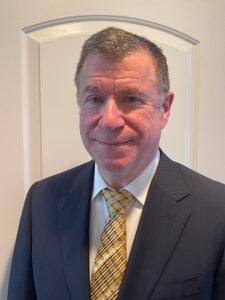It’s always professionally and personally satisfying for me to pass along another positive report on Platelet-Rich Plasma Therapy (PRP). We’ve had remarkable success using PRP Therapy on patients at New Jersey Pain Care Specialists, and good news confirms that this simple, non-invasive procedure is able to provide superior relief for acute or chronic pain by promoting the natural healing potential of the body with platelets from your own blood.
From Top Athletes to Everyday Competitors
A report from Pain News Network points to sports stars like Kobe Bryant, Peyton Manning and Alex Rodriguez who have used PRP Therapy to treat chronic injuries and extend their athletic careers. But does PRP Therapy work for amateur athletes and weekend warriors?
According to a small pilot study published in PLOS ONE, a single PRP injection helps reduce pain and heal injured tissue in patients with chronically sore shoulders caused by rotator cuff tears.
“We studied patients 35 to 60 years old with rotator cuff tendinopathy due to normal aging. For the first time, we were able to not only find reported improvements in pain and mobility, but also in the tissue – the MRI before and after showed structural change and a decrease in the size of tears,” says the lead author, who is a sports medicine physician at the University of Alberta’s Glen Sather Sports Medicine Clinic.
PRP therapy is an emerging therapeutic procedure for the treatment of both acute and chronic soft tissue injuries. The procedure involves withdrawing blood from the patient and then spinning it to produce a high concentration of platelet cells. The plasma is then injected back into the patient at the injury site, speeding up the natural healing process.
The pilot study involved only a small number of participants – 7 patients with rotator cuff tendinopathy received a PRP injection and 2 received a placebo injection. All participants then took part in a 3-month home-based daily exercise program.
“Based on MRI findings before and after the injections, we saw improvements in the tissue six months later in five of seven patients undergoing PRP and an appropriate rehabilitation program. The healing in the tissue appeared to correspond with the reported improvement of the pain and also with the clinical assessment of function,” explains the interim chair of physical therapy at the Faculty of Rehabilitation Medicine.
Ex-Cop Rebounds
One of the patients who benefitted from the treatment was a retired police officer.
“For the past two years, I have tried everything for my right shoulder. Physio would help for a bit but then the problem would still be there. I tried acupuncture, Kinesio tape, cortisol injections – you name it, I’ve tried it,” says the former officer. “Once I did the PRP, it really did fix everything!”
At age 58, she says her injured shoulder feels like new.
“I can shoulder-check now and brush my hair. I can work out and be active again,” she says.
More Study Needed
Researchers admit the small size of the study and other factors may have affected the results.
“Patients considered for this study had very high expectations of PRP treatment, with 70% willing to pay out-of-pocket for the therapy to avoid the possibility of receiving a placebo injection. This presented a serious challenge for recruitment and will likely limit the ability of future investigators to enroll sufficiently large and representative samples of patients for PRP trials. High patient expectations and the placebo effect on clinical outcomes also cannot be discounted,” said a researcher.
In fact, one of the patients who received placebo treatment reported improvements in both pain and physical function – which could have been a placebo response to the injection or because of the home exercise program they participated in.
Kept Kobe – And Other Pros – In The Game
Los Angeles Lakers star Kobe Bryant was one of the first professional athletes to receive PRP therapy, traveling to Düsseldorf, Germany for a more refined version known as the Regenokine treatment. Peyton Manning, Alex Rodriquez, Vijay Singh and other professional athletes soon followed.
Only a few small clinical trials have been conducted on the effectiveness of PRP therapy. Patients with knee osteoarthritis showed significant improvements as long as two years after PRP injections, according to a study published in The Journal of the American Osteopathic Association.
Dr. Bram and his associates at NJPCS use PRP Therapy to treat tendon, ligament and joint injuries that have failed more traditional therapies, including rotator cuff injuries, tennis elbow, Achilles’ tendon, plantar fasciitis, meniscus tears, bursitis of the hip, knee pain or ligament sprains. It is also used for cosmetic procedures based on the same principles, including reversing or preventing hair loss at early or advanced stages, or to support hair transplants.
At the present time, PRP Treatments are not covered by medical insurance..
